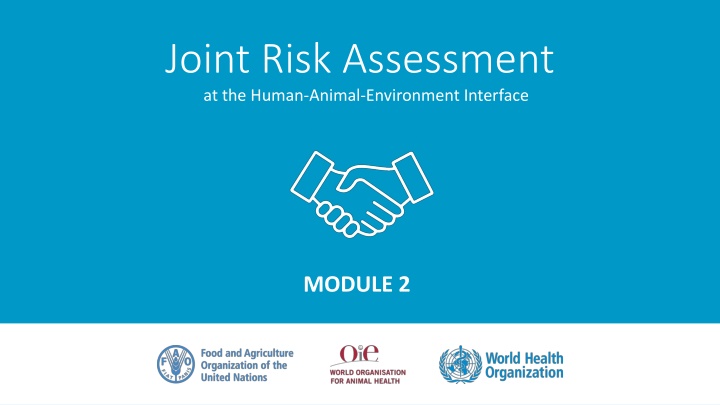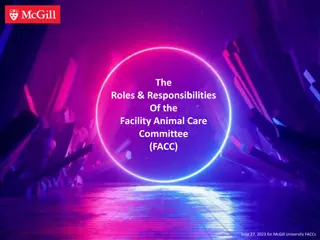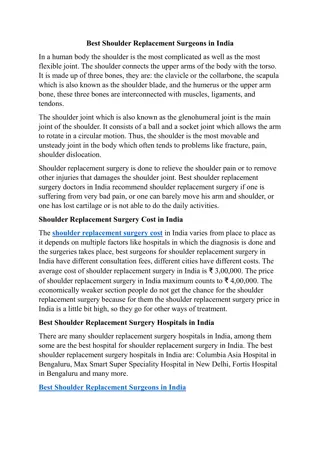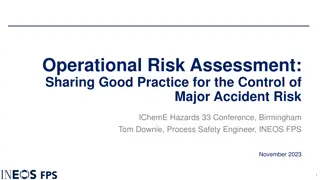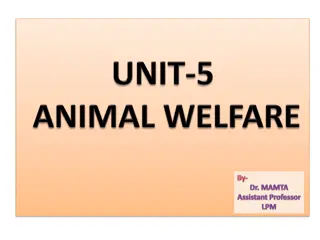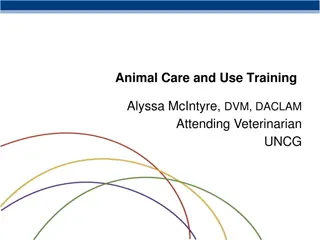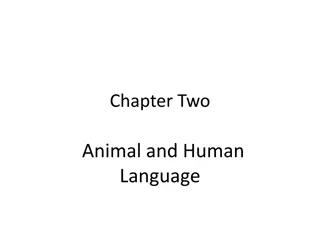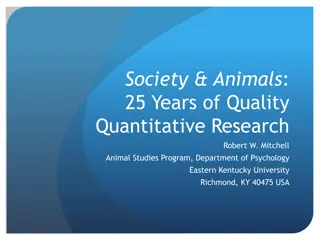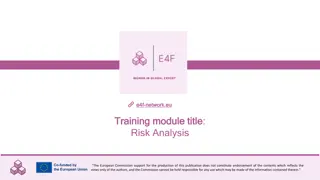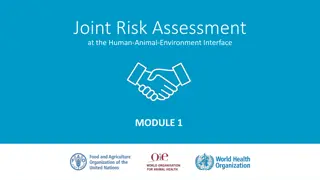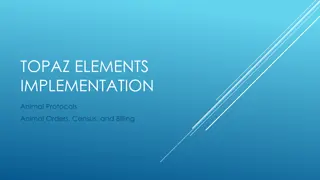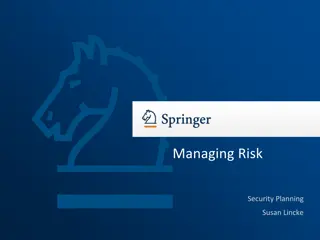Joint Risk Assessment at the Human-Animal-Environment Interface - Module 2
This module delves into the crucial steps of risk framing, defining specific hazards, and scoping the assessment within the context of the interface between humans, animals, and the environment. Understanding the importance of risk framing to guide the technical process and formulate assessment questions is highlighted, emphasizing practical outcomes that support event/threat management and risk communication.
Uploaded on Mar 18, 2025 | 0 Views
Download Presentation

Please find below an Image/Link to download the presentation.
The content on the website is provided AS IS for your information and personal use only. It may not be sold, licensed, or shared on other websites without obtaining consent from the author.If you encounter any issues during the download, it is possible that the publisher has removed the file from their server.
You are allowed to download the files provided on this website for personal or commercial use, subject to the condition that they are used lawfully. All files are the property of their respective owners.
The content on the website is provided AS IS for your information and personal use only. It may not be sold, licensed, or shared on other websites without obtaining consent from the author.
E N D
Presentation Transcript
Joint Risk Assessment at the Human-Animal-Environment Interface MODULE 2
JRA modules & steps You are here 3
Roles & responsibilities Module 2 4
Why risk framing? Risk framing guides the JRA technical process and formulation of risk assessment questions Management and communication options (practical) Keeps focus on key concerns Ensures RA results are practical and useful to support: Event / threat management Risk communication Improves mutual understanding of stakeholder perspectives and needs Risk questions (technical consideration) Risk framing (concerns captured) Note: Risk framing is performed by the JRA steering committee 5
Step 5: Risk framing JRA OT, p. 26-27 5.1 Define the specific hazard 5.2 Define the scope 5.3 Agree on the purpose Note: The JRA steering committee may need to modify risk framing iteratively based on discussions with the JRA technical team or stakeholder group 6
Define the specific hazard Step 5.1, p. 26 A hazard is anything with the potential to cause adverse health effects The hazard is usually known prior to the RA, but needs to be confirmed Keep as narrow as possible to help focus discussion, examples include: Influenza A (H7N9) virus Avian influenza virus Potentially zoonotic influenza viruses 7
Define the scope Step 5.2, p. 26 The scope is the epidemiological boundaries that need to be considered Usually, an assessment of: Defined time and place Health risks At the human-animal-environment interface Posed by the agreed upon hazard Within the country / region During a specified time period 8
Including a wider scope Step 5.2, p. 26 Consider concerns not at the interface only if they provide important information / data To support understanding of pathogen introduction / spread To understand opportunities for human exposure (e.g. value chains) Alternatively, address such concerns in a sector-specific RA prior to the JRA Products/ fomites Humans Wild Birds Live bird trade Note: Including a wider scope will be explained in more detail in module 3, step 6 9
Agree on purpose and objectives Step 5.3, p. 27 The purpose is the reason(s) for doing the assessment In general: The purpose of a JRA is to support risk mitigation efforts The objective of a JRA is to provide a basis for management or communication decisions However, countries may have more specific purposes and objectives they wish to emphasise: These are discussed and agreed by the JRA steering committee These are then conveyed to the JRA technical team 10
Thank you! More information on the TZG project OIE webpage: www.oie.int/en/for-the-media/onehealth/controlling-health-risks/national-collaboration/ WHO webpage: www.who.int/initiatives/tripartite-zoonosis-guide FAO webpage: www.fao.org/animal-health/en/
